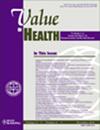心血管疾病特定健康相关生活质量工具的系统回顾与质量评估》:第二部分 心理测量学特性。
IF 4.9
2区 医学
Q1 ECONOMICS
引用次数: 0
摘要
目的:心血管疾病(CVD)健康相关生活质量(HRQoL)工具通常用于测量临床试验和实践中患者报告的重要结果。本研究旨在系统识别和评估心血管疾病专用 HRQoL 工具的心理测量特性:我们检索了从开始到 2022 年 1 月 20 日的 CINAHL、Embase 和 PubMed。纳入了报告心血管疾病特定工具心理测量特性的研究。两位审稿人采用基于共识的健康测量工具选择标准对测量属性和证据质量的评估方法进行了独立评估。评估了七种心理测量特性,包括结构效度、内部一致性、重测可靠性、收敛效度、发散效度、区分效度和反应性:结果:我们确定了 142 项研究,报告了 40 种工具的心理测量特性。其中 5 项(12.5%)工具的测量属性被评为 "足够 "或 "不一致"。16(40.0%)项工具未报告任何反应性证据。在 40 种工具中,15 种(37.5%)工具的内部一致性被评为 "充分",证据质量较高,4 种(10.0%)工具的结构效度、收敛效度和发散效度被评为 "充分",3 种(7.5%)工具的区分效度被评为 "充分":在临床试验或常规实践中测量患者报告的结果时,选择具有成熟心理测量学特性的工具非常重要。本文章由计算机程序翻译,如有差异,请以英文原文为准。
A Systematic Review and Quality Assessment of Cardiovascular Disease–Specific Health-Related Quality-of-Life Instruments: Part II Psychometric Properties
Objectives
Health-related quality-of-life instruments for cardiovascular diseases (CVDs) have been commonly used to measure important patient-reported outcomes in clinical trials and practices. This study aimed to systematically identify and evaluate the psychometric properties of CVD-specific health-related quality-of-life instruments.
Methods
We searched cumulative index to nursing and allied health literature, Embase, and PubMed from inception to January 20, 2022. Studies that reported psychometric properties of CVD-specific instruments were included. Two reviewers independently assessed the methodological quality using the Consensus-based Standards for the Selection of Health Measurement Instruments methods for evaluating measurement properties and quality of evidence. Seven psychometric properties, including structural validity, internal consistency, test-retest reliability, convergent validity, divergent validity, discriminative validity, and responsiveness, were evaluated.
Results
We identified 142 studies reporting psychometric properties of 40 instruments. Five (12.5%) instruments demonstrated measurement properties with sufficient or inconsistent ratings; 16 (40.0%) instruments did not report any responsiveness evidence. Of the 40 instruments, 15 (37.5%) instruments were rated sufficient with high quality of evidence on internal consistency; 4 (10.0%) on structural validity, convergent validity and divergent validity; and 3 (7.5%) on discriminative validity.
Conclusions
When measuring patient-reported outcomes in clinical trials or routine practice, it is important to choose instruments with established psychometric properties.
求助全文
通过发布文献求助,成功后即可免费获取论文全文。
去求助
来源期刊

Value in Health
医学-卫生保健
CiteScore
6.90
自引率
6.70%
发文量
3064
审稿时长
3-8 weeks
期刊介绍:
Value in Health contains original research articles for pharmacoeconomics, health economics, and outcomes research (clinical, economic, and patient-reported outcomes/preference-based research), as well as conceptual and health policy articles that provide valuable information for health care decision-makers as well as the research community. As the official journal of ISPOR, Value in Health provides a forum for researchers, as well as health care decision-makers to translate outcomes research into health care decisions.
 求助内容:
求助内容: 应助结果提醒方式:
应助结果提醒方式:


